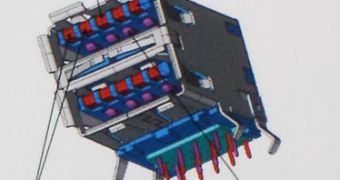Although the shiny, new super-fast USB 3.0 standard has not yet been fully outlined, its implementation might arrive sooner than expected. The most involved entities in laying the ground for the new technology are computer vendors and original equipment manufacturers, that are already preparing their computer hardware for the arrival of the new version.
More and more devices are designed to take advantage of the new USB 3.0 specifications set. For instance, an upcoming Asustek notebook model - the M50 - was spotted "wearing" a pair of USB 3.0 ports. However, the ports are actually rated as belonging to the 2.0 standard and did not carry the extra pins underneath the standard USB 2.0 interconnects, that make all the difference between the 2.0 and the 3.0 standards. The pins are expected to be there when the 3.0 specs are finally completed.
At the first glance, the USB 3.0 ports look just like the older USB 1.1 and 2.0 ones. If a standard USB 2.0 port is made of a metal sleeve with a plastic tongue with four metal connectors embossed on it, the USB 3.0 standard features a plastic tongue with five miniature grooves that will shield the additional connectors that are necessary for the device to reach the amazing 4.7Gb/s data transfer rate.
The M50 notebook featured the grooved plastic tongue, but it lacked the extra connectors. However, it is extremely important that the USB 3.0 standard already gets adopted and implemented. If switching to USB 2.0 was extremely rapid because it used identical connectors as the USB 1.1, the USB 3.0 comes with some small alterations. The M50 comes with three USB connections split into two USB 3.0 ports and a single USB 2.0 connector. This means that USB 2.0 and the 3.0 specifications will coexist for some time.
Asustek's M50 notebook will feature Intel's 45nm Core 2 Duo T9300 processor as well as a Nvidia GeForce 9500M mobile GPU. There is no release date for the product yet.

 14 DAY TRIAL //
14 DAY TRIAL //